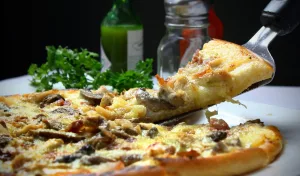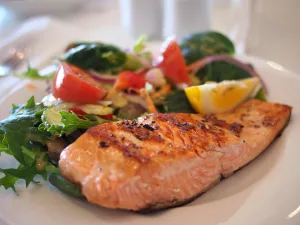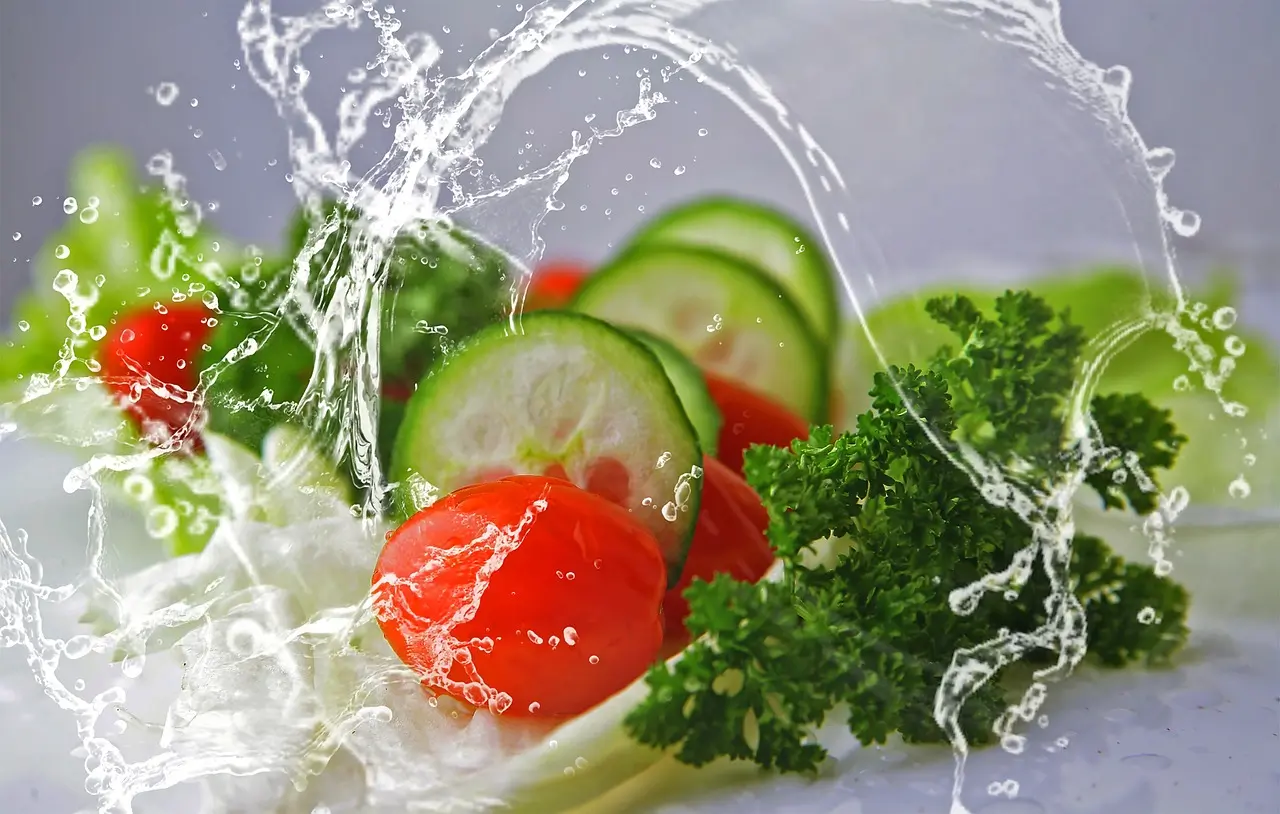Optimising Food Management In Restaurants
Table of Contents
Effective food management isn’t just about culinary expertise; it’s the backbone of success. From renowned fine dining establishments to cosy corner cafes, the ability to orchestrate ingredients with finesse while maximising efficiency is paramount. This article explores the intricacies of food management within restaurants, tackling common obstacles and presenting professional techniques to enhance your culinary enterprise.
Understanding Food Management in Restaurants
What is Food Management in Restaurants?
Food management in restaurants involves various activities revolving around food procurement, storage, preparation, and serving. It entails meticulous planning and execution to ensure optimal quality, minimise waste, and enhance profitability.
- Importance of Efficient Food Management: Efficient food management isn’t just about maintaining order in the kitchen; it’s about fostering a culture of excellence that resonates with customers and drives long-term success for the restaurant.

Challenges in Restaurant Food Management
Restaurant food management faces challenges, from the perpetual battle against food waste to the intricacies of inventory management and quality control.
- Food Waste: A staggering amount of food goes to waste in restaurants yearly, impacting both financial bottom lines and environmental sustainability. Britain’s hospitality sector produces 920K tonnes of food waste yearly. 75% is preventable through proper recycling.
- Inventory Management: Careful planning and execution are key to balancing inventory levels and demand. It is imperative to avoid shortages or overstocking while meeting the demand. Great care and attention to detail should be exercised during the planning and execution stages to achieve this goal.
Maintaining Quality Standards: In an industry where consistency is key, ensuring that every dish meets impeccable quality standards is a constant challenge.
Required Materials and Equipment
Efficient food management hinges on having the right tools and equipment at your disposal. Here’s a rundown of essential kitchen essentials:
- Cutting-edge Kitchen Tools: High-quality knives, measuring utensils, and kitchen gadgets are indispensable for precision and efficiency.
- State-of-the-Art Appliances: Reliable refrigeration units, ovens, and cooking equipment streamline food preparation and storage.
- Ample Storage Space: Well-organised storage areas and shelving units maximise efficiency and ensure ingredients are readily accessible when needed.
How To Control Food Costs In Restaurants: 7 Insider Tips On Causes And Solutions
Strategies for Effective Food Management
1. Menu Planning and Development: Crafting a successful menu requires a delicate balance of creativity, market research, and strategic planning.
2. Cater-to-Customer Preferences: Understanding your target audience and catering to their tastes and preferences is essential for a successful menu. Embrace Seasonality: Incorporating seasonal ingredients adds variety to your menu, ensures freshness, and reduces food waste.
3. Inventory Management: Optimising costs and maintaining consistent supply chain operations is significant, and a robust inventory management system is critical to achieving this.
4. Utilise Technology: Inventory management software streamlines tracking and helps identify trends, reducing the risk of overstocking or shortages.
5. Regular Audits: Conducting routine inventory audits helps maintain accurate stock levels and identify areas for improvement.
Supplier Relationships
Building and sustaining strong connections with suppliers is essential to procure high-quality ingredients at reasonable rates. It is necessary to ensure that the quality of the ingredients is high while keeping the prices affordable. Such relationships not only help in securing the best quality products but can also lead to better deals and long-term partnerships. Therefore, building a good rapport with suppliers is a critical factor in the success of any business that relies on raw materials or ingredients:
- Negotiate Wisely: Negotiating contracts and pricing terms can lead to significant cost savings and ensure reliable supply.
- Prioritise Quality: Partnering with reputable suppliers who prioritise quality control ensures consistency in ingredient sourcing.

Why You Should Prioritise Food Management in Your Restaurant
Prioritising food management is essential for enhancing customer satisfaction, reducing costs, and ensuring the long-term success of your restaurant.
- Ways to Implement Effective Food Management Practices: Implementing effective food management practices involves fostering a culture of efficiency, leveraging technology, and leading by example.
- Methods for Training Staff on Food Management Best Practices: Investing in staff training and education is crucial for ensuring consistent food quality and safety standards.
How can I minimise food waste without sacrificing menu variety?
Creative menu planning, portion control measures, and strategic inventory management are effective ways to minimise food waste without compromising menu variety.
Sure, here’s a step-by-step guide on how to minimise food waste without compromising menu variety:
- Creative Menu Planning: Start by analysing your current menu offerings and identifying items that tend to generate excess waste. Consider replacing these items with more versatile ingredients that can be used in multiple dishes. Additionally, focus on creating dishes that utilise seasonal ingredients, as they are typically fresher and more readily available, reducing the likelihood of spoilage.
- Portion Control Measures: Implement portion control measures to ensure that each dish is served in appropriate quantities. Train your kitchen staff to portion ingredients during food preparation to avoid over-serving accurately. You can also offer customisable portion sizes or encourage customers to order smaller portions if they have a smaller appetite, thereby reducing the amount of food wasted.
- Strategic Inventory Management: Develop a comprehensive inventory management system to track ingredient usage and monitor stock levels. Regularly assess which ingredients are frequently overstocked or underutilised and adjust your ordering quantities accordingly. Additionally, consider implementing a “first in, first out” (FIFO) inventory rotation system to ensure that older ingredients are used before newer ones to minimise waste.

Related Articles:
Best Restaurant Inventory Management System
How To Become A Restaurant Manager
What are some effective ways to track inventory in a restaurant setting?
Utilising inventory management software, conducting regular audits, and implementing standardised procedures for receiving and stocking inventory are effective ways to track inventory in a restaurant setting.
How to track inventory effectively in a restaurant setting:
Utilising Inventory Management Software: Invest in and implement a reliable inventory management software system specifically designed for restaurants. Choose a software solution that offers real-time tracking, barcode scanning, and customisable reporting. This software will help.
Conducting Regular Audits:
- Schedule regular inventory audits to physically count and reconcile the actual inventory with the recorded inventory levels in your management system.
- Conduct audits consistently, such as weekly or monthly, to ensure accuracy and promptly identify discrepancies.
- During audits, pay special attention to high-value or high-demand items to minimise the risk of theft or shrinkage.
Implementing Standardised Procedures for Receiving and Stocking Inventory:
- Develop and enforce standardised procedures for receiving and stocking inventory to maintain consistency and accuracy.
- Establish protocols for verifying incoming shipments against purchase orders, inspecting goods for quality and freshness, and properly storing items in designated areas.
- Ensure compliance and minimise errors by training your staff on these procedures.
By following these steps and utilising inventory management software, conducting regular audits, and implementing standardised procedures for receiving and stocking inventory, you can effectively track inventory in your restaurant setting, reduce the risk of stockouts or overstocking, and optimise your operations for efficiency and profitability.
Restaurant Food Waste Management Challenge That Will Change Your Restaurant
What are the critical factors to consider when developing a menu for my restaurant?
When developing a menu, it’s essential to consider factors such as customer preferences, seasonal availability of ingredients, cost of goods sold, and profit margins to create a well-balanced and profitable menu.
A guide to developing a menu for your restaurant:
- Know Your Customers: Start by understanding your target demographic and their preferences. When deciding, it’s important to consider various factors, such as a person’s age, gender, dietary restrictions, and cultural background. Survey your existing customers or conduct market research to gather insights into their taste preferences, dining habits, and favourite dishes.
- Consider Seasonal Availability: Take advantage of seasonal ingredients to create dishes that are fresh, flavourful, and cost-effective. Research the availability of seasonal produce, meats, and seafood in your region and incorporate them into your menu offerings. Seasonal dishes not only showcase the best of each season but also create excitement and variety for your customers.
- Calculate Cost of Goods Sold (COGS): Analyse the cost of ingredients and calculate the cost of goods sold (COGS) for each menu item. Consider factors such as ingredient prices, portion sizes, and recipe complexity. Aim for a balanced menu that includes a mix of high-margin and low-cost items to optimise profitability while still offering value to customers.
- Determine Profit Margins: Set pricing for menu items based on desired profit margins and competitive analysis. Factor in overhead costs, labour expenses, and other operational expenses when determining menu prices. Finding a middle ground between providing affordable prices and guaranteeing profitability to entice customers while maintaining financial stability is essential.
- Create a Well-Balanced Menu: Develop a diverse menu that caters to a variety of tastes and dietary preferences. Include a mix of appetisers, entrees, sides, and desserts, as well as options for vegetarian, vegan, gluten-free, and other dietary restrictions. Ensure your menu offers something for everyone while maintaining a cohesive theme or concept.
- Test and Refine: Once you’ve developed your menu, conduct taste tests and gather feedback from friends, family, or focus groups. Pay attention to comments on taste, presentation, portion size, and overall value. Use this feedback to make adjustments and refinements to your menu before officially launching it to the public.
How can I ensure consistent food quality across all menu items?
Consistent food quality relies on proper training, standardised recipes, meticulous quality control measures, and regular inspections to ensure adherence to established standards.
How to ensure consistent food quality across all menu items:
Proper Training:
- Start by providing comprehensive training to your kitchen staff on food preparation techniques, portion control, and plating standards.
- All team members must understand the importance of consistency and adhere to standardised procedures.
- Ensure that training sessions are conducted regularly and that refresher courses are available to reinforce best practices and address gaps in knowledge or skills.
Standardised Recipes:
- Develop standardised recipes for each menu item, detailing precise measurements, cooking methods, and presentation guidelines.
- Ensure that all kitchen staff consistently follow these recipes to maintain uniformity in taste, texture, and appearance.
- Regularly review and update recipes as needed to reflect any ingredients or cooking techniques changes.
Meticulous Quality Control Measures:
- Implement rigorous quality control measures throughout the food preparation process.
- Conduct thorough inspections of incoming ingredients to ensure freshness and quality.
- Monitor cooking temperatures, cooking times, and food handling procedures to prevent contamination and ensure food safety.
- At every production stage, ensure quality checkpoints are established to detect and rectify deviations from the established standards.
Regular Inspections:
- Schedule regular inspections of kitchen facilities, equipment, and procedures to identify potential areas for improvement.
- Look for signs of wear and tear on equipment, cleanliness issues, and compliance with food safety regulations.
- Address any issues promptly and provide additional training or resources to maintain consistent food quality.
Feedback Mechanisms:
- Encourage feedback from both customers and staff to identify any issues with food quality and address them proactively.
- Implement systems for collecting and documenting customer feedback, whether through comment cards, online surveys, or direct interactions with staff.
- Use this feedback to identify trends, address recurring issues, and continuously improve your menu and operations.

Conclusion
Mastering the art of food management is a journey that requires dedication, creativity, and strategic thinking. Restaurant owners and managers can use the tactics provided in this guide to handle food management intricacies easily to improve efficiency, profitability, and customer satisfaction, giving them the confidence they need to succeed. It’s time to unlock your restaurant’s full potential and embark on a culinary adventure that leaves a lasting impression on your customers and industry peers.
FAQ (Frequently Asked Questions)
Is It Possible to Reduce Food Waste in Restaurants?
Reducing food waste in restaurants is possible and beneficial for both the environment and the bottom line.
Is It Possible to Improve Profitability Through Food Management?
Efficient food management practices directly impact profitability by minimising waste, optimising inventory, and improving operational efficiency.
Can You Enhance Food Quality with Effective Management?
Effective food management practices, including proper storage, handling, and training, are instrumental in maintaining high food quality standards.
Can You Streamline Kitchen Operations with Food Management?
Absolutely! Implementing efficient food management practices can streamline kitchen operations to improve efficiency and productivity.
How can I negotiate better deals with food suppliers?
Building solid relationships with suppliers, consolidating orders, and demonstrating loyalty can help restaurant owners negotiate better deals with food suppliers.

